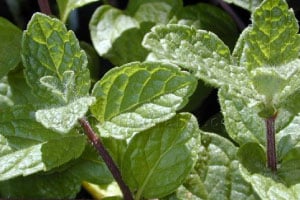
Learning Download: How to Grow Mint
From Seed to Harvest: A beginner’s guide to growing mint
The mint family is a very large family and includes lots of cross pollination. The two most commonly grown mint plants are spearmint and peppermint. Other mint varieties include chocolate mint, pennyroyal, apple mint and more. Peppermint is the only mint variety that is not grown from seed, it is grown from root cuttings of established plants as peppermint plants do not produce seeds. Mint is generally used as a garnish or to flavor dishes, but it can also be a fragrant addition to any garden.
To plant:
Sow seeds indoors 10 weeks before the last frost or direct sow them outdoors in April or May. Plant seeds 1/4 inch deep. If starting indoors, incorporating heat from the bottom will quicken the germination process.
To grow:
When moving mint outdoors, space the plants up to 2 feet apart. Mint spreads quickly due to its root system and can easily get out of control, which makes it do well in containers where its roots are limited in where they can grow. Mint grows best in full sun or partial shade and when planted in organically rich soil.
After the growing season, bring mint pots inside and place on a windowsill, where they will continue to grow throughout the winter. Mint repels certain pests like cabbage moths, aphids and flea beetles and it attracts predatory wasps and other beneficial insects. Because of this, it makes a good companion plant for Brassica plants, but since mint can become invasive, it is best to use cut mint as mulch around the Brassica plants to reap the benefits.
One problem mint plants may experience is rotting, so be careful not to get water on the foliage of the mint plant.
To harvest:
Mint is a hardy plant that grows back quickly, so clip the leaves or entire branches as you need them throughout its growing season. Mint is generally ready to harvest once the plant has begun to flower.
What mint craves:
Since mint spreads so quickly, it is best to fertilize the plant only if it is in a container or a bed bordered by metal or plastic. For mint in a container, apply an all-purpose liquid fertilizer in the spring when new growth appears on the plant. Fertilize every four to six weeks, as frequent watering can wash away the nutrients.
At planting time, amend soil with composted manure and scatter a 1/2 tablespoon of an all-purpose, 16-16-8, slow release, granular fertilizer per each square foot of the bed and work the compost/fertilizer into the top 6 inches of soil.
When applying fertilizer, avoid getting it on the mint’s leaves.
Where to buy mint seeds:
You can find a selection of mint seeds at Urban Farmer.

